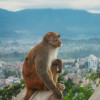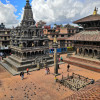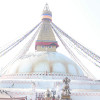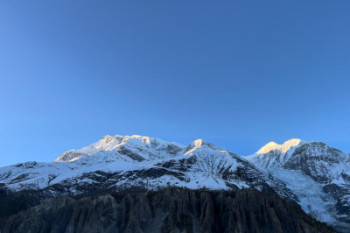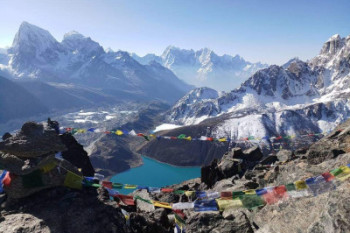
The Buddha Circuit Tour unveils the life of Buddha from birth to renunciation. Experience his birth in Lumbini, upbringing in the palace, enlightenment in Bodhgaya, teachings in Sarnath, and renunciation in Kushinagar. Immerse yourself in the transformative journey, guided by archaeological evidence and Buddhist scriptures.
Trip Highlight
- Visit major Buddhist stupas of Kathmandu, centers of Buddhism, Swoyambhunath & Bouddha.
- Explore Patan durbar square, its historicity, amazing architecture & folklores.
- Visit four major must visit sacred place in Buddhism: Lumbini, Bodhgaya, Sarnath, Kushinagar.
- Visit Namobuddha, the place where Buddha had attained perfection in giving in his previous birth.
- Cross border trip between Indian and Nepal.
- Monks, Monasteries, people and their culture.
Buddha, during the last stage of his life, once was replying to one of his disciple’s query that if you truly want to remember and know me you should visit four places: the place where I was born ‘Lumbini’, the place where I got enlightened ‘Bodhgaya’, the place where I first turned the wheel of Dharma ‘Mrigdavan’ and the place where I will take a great renunciation ‘Kushinagar’. Since then Lumbini, Bodhgaya, Sarnath (Mrigdavan) and Kushinagar have become the pilgrimage centers for all Buddhist around the world. Anyone who truly revere Buddha has a strong desire to visit these four places once in his/her lifetime.
Today Buddhism or Buddha dharma is a fourth largest religion in the world which is based on teachings of Buddha. To go little bit deeper, a prince called Siddharth Gautam of Kapilvastu State who spent 29 years of his life in Palace once went through witnessing four major incidents of life. He saw an old man, a dead body, a crippled/diseased one and a shraman which so touched his heart that he could no longer stay calm without finding a solution to all those problems in life. He was asking a questions like why one should grow older, why one should die, why one should live a painful life etc. One night the prince renounced the palace to seek all those answers in his mind. He wandered many years doing various ascetic practices but they did nothing to answer his questions even though they were wonderful experiences. Ultimately he came to a kind of conclusion to adopt a middle path and sat on for meditation under the tree, decided to not open his eyes until he gets enlightened.
Buddha Circuit Tour offers to unfold all those aspects relating to Budhha from his birth, childhood through the stage of him getting realized to finally his great renunciation. It will take you to the place where Buddha was born and make you realize what it means to be there physically. Real story that tells you how Mayadevi gave birth to Siddharth in Lumbini upavan, how he was taken to the palace, how he grew up there and how he renounced a lavish life of the Palace in search of truth. The place where he was enlightened, Bodhgaya, we will try to attune ourselves to an aura of powerful existence in the place. We will visit Sarnath where he gave his first teaching after his enlightenment and finally a place where he took a great renunciation, Kushinagar. If you are Buddhist, you already know what it means to be there and if you are an enthusiast or learner then you will have an opportunity to understand completely different approach to life which might change the course you have taken so far to a blissful one. All those stories will be illustrated based on available archeological and monumental evidences including Buddhist scriptures.
Buddhism is not just a religion the way it is generally perceived by many non-Buddhists, it is rather a way and a method in life to attain Nirvana. When you are on this path, the peace is inevitable though it is not an ultimate goal. Though it is widely believed that Buddhism is a religion based on Buddha’s teachings, there are many aspects yet to be understood how Buddhism emerged and evolved to date. That’s why you will get to know many interesting stories existing in Buddhist society. Unlike many people think, Buddhism in Himalayan area developed and evolved in a quite different way. You will be amazed to know that there have been not only one Buddha, the concept of many Buddhas instead and the stories behind it. When you land in Nepal with a purpose of knowing Buddhism deeply, you will get to explore many aspects which is not only limited to Siddharth Gautam Buddha, rather you will know that the Buddha himself was one of descendants in a series of many Buddhas. The concept of four human Buddha as well as fifth one which is yet to come has been well mentioned in Buddhist scripture. When you will start this sacred tour with centuries old Stupa in Kathmandu and nearby areas, you will have a broader background to understand what we are going to unfold in the Tour ahead.
Show more...Places Visited:
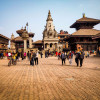
Kathmandu
kathmandu, Nepal
Activities:
Arriving in Kathmandu is an unforgettable experience, with breathtaking Himalayan views. Upon landing at Tribhuwan International Airport (TIA) at 1350m, you can obtain the Nepal entry visa in advance or on arrival. Visa processing at TIA may take approximately 45 minutes, depending on the queue. For visa information, please refer to the official Department of Immigration Nepal website. Once you exit the gate, our representative will be waiting with a placard displaying the company name and logo. They will welcome you with a sacred Tibetan scarf and arrange a private transfer to your hotel. The journey to Thamel, approximately 30 minutes from TIA, offers sights of Pashupatinath temple, bustling city life, and diverse vehicles, adding to the enjoyment. Upon reaching the hotel, you can relax and rest. Thamel offers a wide range of restaurants, shopping centers, and quality accommodation. You will receive a trip briefing and later be invited to a welcome dinner. Enjoy an overnight stay at the hotel.
Show more...Places Visited:
Activities:
Your formal tour starts from today. Nepal in general while Kathmandu in particular is the center for Buddhism for many centuries. Kathmandu valley displays an enormous evidence of Buddhist practice in the form of sculpture, architecture, lifestyle and many more since ancient times. Three centers that largely represent the development of Buddhism are Swoyambhunath, Boudhanath and Patan areas. Each of them carries an immense, impressive and fascinating stories of distant past.
Swoyambhunath Stupa (Monkey Temple)
- holiest Buddhist stupas in Nepal
- World Heritage Sites
- Literally meaning "self- created"
- Praised and meditated by many Buddhas: Shikhi, krakuchhand, kanakmuni, Shakyamuni, Manjushri - Excellent view of the Kathmandu valley The distance is about 3.9km from Thamel takes around 15min in private vehicles.
Swayambhunath has been listed in the World Heritage Sites. The entire valley was an enormous lake, nagdah, out of which grew a lotus with five colored flame (self-arisen). Lotus was transformed into a hill and the flower became the stupa. It is still believed that the self-arisen flame is covered with dome of Stupa. The place is known as Swayambhu, meaning "Self-Created" over which a stupa was later built. Swayambhu is among the oldest religious sites in Nepal known as 'monkey temple' because of the large tribe of roaming monkeys. Located at one of the highest elevations in Kathmandu Valley gives panoramic views of the city. The place is praised by Buddha and meditated by several Buddha's as a pure holy site. We'll see three enormous shining golden statues of Sakyamuni Buddha, a four-armed Chenresig and Guru Rinpoche, built-in 2003. The site has two access points: a long staircase contains 365 steps leading directly to the main platform of the temple and vehicle road around the hill from the south leading to the south-west entrance. The first sight on reaching the top of the stairway is the enormous Vajra. The first earthly element facing the stupa on left is a small building contains one of the five elements placed in cardinal points around Swayambhunath. There are many small shrines with statues of Tantric and shamanistic deities, prayer wheels for the Tibetan Buddhists. The stupa represents Buddha’s mind. It offers peace, freedom, and joy and ultimately helps to obtain perfect enlightenment. Huge prayer wheels and fine Buddhist paintings are displayed in the monasteries, as well as the largest Buddha statue in the country. The stupa consists of a dome at the base; above the dome, there is a cubic structure with the eyes of Buddha looking out over the valley. The stupa has stood as a hallmark of faith and harmony for centuries with Hindu temples and deities incorporated in this Buddhist site. Visitors walk around the stupa and recite mantras, make offerings, turn prayer-wheels and make wishes for the benefit of all beings. Near the stupa left at the corner is a small red brick building has Swayambhu Buddhist museum. There is a collection of Buddhist statues and items. Hariti Temple (Ajima Temple) is a two-tiered gilded Newari style temple. Harati is the Buddhist goddess for the protection of children against infectious diseases, protectress deity of Swayambhu, and the deity of wealth.
Bouddha Stupa
- The largest stupa in the world
- Most sacred Tibetan Buddhist site
- The ancient trade route from Tibet
- The woman built the stupa and was completed by her four sons
- Stupa contains a relic of Kashyap Buddha On the rooftop restaurant and enjoy the calm and peaceful ambience with a cup of coffee.
Boudha stupa is the largest and most sacred Tibetan Buddhist site outside of Tibet forming a religion and culture hub for the Tibetan and people from the Himalayas of Nepal. The Stupa was on the ancient trade route from Tibet. The Stupa is claimed to have the relic of Kasyapa Buddha, the third Buddha of the Bhadrakalpa. Boudha Stupa, a UNESCO World Heritage Site significant for its historic and architectural significance, with sprouting monasteries and craftsmanship. It is said that the stupa is built by the mother Jyajhima, a poultry woman. She was very poor despite her poverty she had an intense desire for building a stupa. The mother passed away after she completed up to the vase, the dome-like structure. She had four sons, and the construction of the rest of the Stupa was completed by four sons. After they finished it, they all stood up in front of it and made prayers. Everyone made their wishes. When they were praying, all the buddhas and bodhisattvas were absorbed into the stupa, which is why the name of the stupa is also “All-Encompassing.” The stupa is a semicircular white dome and the towering spire, with unblinking eyes painted on each side that stares into the four directions. The overall shape represents a Buddhist mandala (a cosmological map) and the path towards enlightenment, as well as the mythical center of the cosmos, Mount Meru. The four Dhyani Buddha signifies the crucial points, and the fifth, Vairocana is enshrined in the central white hemisphere of the stupa. The base of the stupa consists of three large platforms, decreasing in size. The square tower is topped by a pyramid with 13 steps, represents the stages that human beings must pass through to achieve nirvana. The triangular shape is the abstract for the elements of fire. Every portion has a symbolic significance: the base, dome, spire, and pinnacle represent the five elements. It is said that the stupa contains a piece of bone from the skeleton of Siddhartha Gautama, the historical Buddha. There are 108 images of Dhyani Buddha at the base of the stupa, accompanied by prayer wheels organized in a group of four or five in 147 different niches. The prayer flags tied on the stupa are believed to carry mantras and prayers towards heaven. The place is quiet and peaceful to find some spiritual connection with this place. Moreover, the sound of singing bowls and Buddhist chants, mixed with the smell of incense burning creates a kind of healing energy. The place allows visitors to delve into the lives of Buddhist monks and nuns who devote their lives to simplicity and non-violence. Boudhanath is the best place to learn about spirituality, meditation and the history of Buddhist philosophy, there is no other place like Boudhanath to visit. Early in the morning and evening time, Buddhist monks in maroon robes are seen circumambulating the stupa with prayer wheels on their hands. Small peripheral of the stupa is surrounded by the Thanka and rituals objects shop. The spot is favorable to explore both the culture and architectural sites. Numerous small stupas are located at the base.
Patan City
City of fine arts, Golden Temple, Mahabuddha.
Patan is one of the three medieval cities in Kathmandu and a destination of fine arts has hundreds of fascinating Hindu and Buddhist monuments scattered in and around. Patan City is an enchanting mixture of palace buildings, artistic courtyards, and former palace complex. Most of the monuments are back to the medieval Malla period 15th to 17th century as the golden period of Nepalese art and architecture. Krishna Mandir- a stone temple of Lord Krishna with its 21 spires and bas-relief art depicting scenes from the Mahabharata and Ramayana epics. In addition to this, the main highlights are the Golden temple, Rudravarna Mahabihar and Patan mahabuddha, an exemplary Buddhist monumental sites in Patan. The background, story and history of these sites will amaze you while witnessing a living history. The stories behind the development of different segment in Buddhism, Bajrayan, which is a typical Newari Buddhist practice in Kathmandu valley. Patan is also the center of wooden and metal artifacts.
Show more...Places Visited:
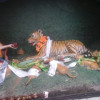
Namo Buddha
Kavrepalanchowk, Nepal
Activities:
After the breakfast, we will drive to Kavre district for Namo Buddha darshan/visit. Namo Buddha is of greatest historical, spiritual and religious significance. In Buddhism, the term ‘Bodhisatwo’ refers to someone who creates such a mind (Bodhichitta) with an objective of becoming Buddha. A Bodhisatwo has to excel through ten different stages of perfection to reach the state of becoming Buddha. Those ten stages are: perfection of giving, perfection of morality, perfection of endurance, perfection of effort, perfection of concentration, perfection of wisdom, perfection of method, perfection of aspiration, perfection of power, perfection of knowledge. After getting enlightened, Buddha walked through so many places and in this course he reached Gandhmadan parvat, a present day Namo Buddha where he saw an elevation of land and became so meditatively nostalgic. His disciple asked the reason behind being so monotonous towards specific place, then Buddha described his previous life’s memory. As per the story Buddha in his previous life was youngest prince ‘Mahastwo’ that’s when he sacrificed his body to feed a hungry tigress. Such incident was said to have been well elaborated by Buddha himself in Buddhist Jatak scripture ‘Divyavadan’. While returning from this place, Buddha himself greeted (naman) this place and hence the place was started to be called Namo Buddha. Namo Buddha is the place where Buddha in his previous life performed and exceled in the perfection of giving. Today the place is center for Buddhist pilgrims with magnificent huge monasteries, stupas and many stories related to Buddha.
Show more...Places Visited:
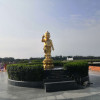
Lumbini
Rupendehi, Western Nepal
Activities:
After the breakfast, we will depart to Kathmandu domestic airport for flying to Gautam Buddha International airport, then you will be transferred to Hotel. Though the duration is of only thirty minutes, the flight will be extremely scenic while you will witness large spreading of Himalayas on your right side. When everyone is done with their refreshment in Hotel, we will set on for exploring Lumbini. Lumbini Buddhist pilgrimage sites - UNESCO World Heritage Sites - Perform chanting and meditation - Asoka pillar, Holy pond, Maya Devi temple - Birthplace of Gautam Buddha "Light of the Asia" - The holy pond where Maya Devi took the ritual dip and where he had his first bath Lumbini is one of the four main pilgrimage sites in Buddhism and an important place for those Hindus who consider Buddha one of the many manifestations of the god Vishnu. The place is also defined as a UNESCO World Heritage Site. The holy site of Lumbini runs ancient monasteries, a sacred Bodhi tree, an ancient bathing pond, the Ashoka pillar, and the Mayadevi temple. Maya Devi Temple is the most important Buddhist temple in Nepal considered as the birthplace of Gautam Buddha "Light of Asia". Visitors will perform chanting and meditation at this site. The birthplace of Buddha has number of older temples, including the Mayadevi Temple, and various new temples, founded by Buddhist organizations. There is an image depicting his birth inside. The current whitewashed temple was built to protect the older temple under it. There’s a small area looking down into the dugout areas where Buddha was born. There’s a small glass panel with some faded painting. Several monuments, monasteries, museums, and the Lumbini International Research Institute are also located in this holy site. We will visit the Holy Pond beside the temple, where Maya Devi took the ritual dip prior to his birth and where he had his first bath. Buddha was born while Maya Devi was traveling to her father's kingdom to give birth. It is said that she gave birth painlessly when the Buddha was born he immediately spoke and then took seven steps north and a lotus flower sprang forth with each step. Most of the Buddha's miracles are seen in Buddhism as being the result of extraordinary supernatural abilities gained through advanced meditation, rather than miraculous powers. Many of the Buddha's followers, as well as some non-Buddhist hermits and yogis who attained high meditative states, also had some of these same abilities. Because some Hindus regard the Buddha as an incarnation of Vishnu, thousands of Hindus come here during the full moon of the Nepali month of Baisakh (April–May) to worship Queen Mayadevi as Rupa Devi, the mother goddess of Lumbini. In the adjoining sacred garden, we’ll find the pillar of Ashoka, stupas, and maroon and saffron-robed monks congregating under the Bodhi tree. Related to an ancient fig tree and characterized by heart-shaped leaves term given to a tree where the Buddha was said to have achieved enlightenment in India. The Bodhi tree beside the Maya Devi temple is highly regarded and decorated with colorful prayer flags. In both Buddhism and Hinduism, the pillar symbolized the axis on which the world spins. The pillars represent the first evidence of the Buddhist faith and to spread the dharma throughout the kingdom. The Ashoka pillar is the oldest in Nepal erected by Emperor Ashoka who visited the place by himself. The Ashoka Pillar in Lumbini was installed as a sign of respect for the Gautam Buddha after Emperor Ashoka converted to Buddhism. The fascinating history behind the monument and its spiritual significance make the Ashoka Pillar a must-visit site for history, religious and architectural enthusiasts. Tilaurakot, Shakya palace Tilaurakot is the capital of Shakya Kingdom extends over an area of two and a half miles. The Kingdom of Buddha’s father located in Kaspilvastu near Lumbini where Siddhartha Gautam spent his first 29 years as a prince. The site of ancient Kapilvastu due to its general accordance with local bearings and geographical conditions as described in the Buddhist texts. The site sits in a peaceful meadow on the banks of the Banganga River. The eternal World Peace Flame is a major attraction of the Lumbini located at the center of the garden. We will observe the flame kept glowing uninterrupted 24 hours a day. The flame represents peace in the world and celebrates the International Peace Year. Besides the religious and historical significance, the Lumbini sightseeing tour offers cultural insights into the village life of southern Nepal. The Buddhist pilgrimage tour of Nepal unveils how Buddhism was preserved and Buddhist philosophy was developed since the time of Buddha. Overnight stay will be in Lumbini.
Show more...Places Visited:
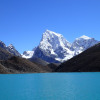
Niglihawa
Kapilvastu, Nepal

Gothihawa
Kapilvastu, Nepal

Ramgram also called Koliyagram
Nawalparasi, Nepal
Activities:
Today, our primary focus will be on visiting spiritual and historical destinations. These include Koliyagram and Devdaha, where according to Buddhist texts, it is believed that the relic of Buddha is still preserved beneath the stupa. It is said that after Buddha's renunciation, there was a dispute among several kingdoms regarding the possession of his remains. Initially, Kushinagar claimed the relic, followed by seven other kingdoms. Eventually, it was decided that the relic would be divided into eight portions, one for each kingdom. The Koliya kingdom, who were Buddha's maternal relatives, constructed a stupa in their kingdom to pay homage to Buddha's memory. Emperor Ashoka ordered the excavation of all the relics, except the one in Koliyagram, to build numerous stupas across the Indian subcontinent. Hence, those seeking to pray and experience the tangible presence of Buddha should visit this site. Likewise, Kodan is another historically and spiritually significant place on our itinerary. After attaining enlightenment, Buddha resided here with his Bhikshus, making it the first monastery ever established in Nepalese territory by King Shuddhodhan to welcome his enlightened son.
Show more...Places Visited:

Patna
Bihar, India
Activities:
After the breakfast, we will start our long day journey on a drive to Patna. This drive will be quite memorable and scenic while we drive through Nepal’s and India’s Gangetic plain land with the views of the different lifestyles, people, culture and different settlement patterns in different territories. Our overnight stay will be in Patna.
Show more...Places Visited:

Bodhgaya
Bihar, India
Activities:
With an early breakfast, we will start our day with a drive again to Bodhgaya via Nalanda/Rajgir. Nalanda is the famous place since this place used to be the center of wisdom and knowledge during post Buddha period. Nalanda University is what we talk about today for its immensity in terms of enrollment of students and teachers. We will be staying overnight in Bodhgaya.
Show more...Places Visited:

Bodhgaya
Bihar, India
Activities:
This is the day for us to explore Bodhgaya. This is the second place in a series of must visit Buddhist sites in our itinerary. This was the place where prince Siddhartha got enlightened ‘nirvana’ under the Bodhi tree after meditating for 49 days. The vajrasan throne set up by Emperor Ashoka now revered as Mahabodhi temple by Buddhist pilgrims. The holy Bodhi tree, Animeshlochana chaitya, Ratnachankramana, Ratnagarah, Ajapal Nigrodh tree, Rajyatna tree, Muchhalinda pond are the most visiting spots for Buddhist pilgirms. Niranjana River, Sujata kuti and big Buddha statue are also amongst most visiting sites in Buddhism. Now you are surrounded by that powerful energy, be prepared to attune with that. Overnight stay will be in Bodhgaya.
Show more...Places Visited:

Sarnath
Utter Pradesh, India
Activities:
The schedule will be as usual while we drive to Sarnath after the breakfast via Varanasi. Sarnath was the place where Buddha delivered his first sermon after enlightenment, 13km northeast of holy city of Varanasi in UP. Varanasi, a confluence of holy river Ganga and Varun. The popular Dhamekha Stupa, which emperor Ashoka got it erected, also here in Sarnath, as it is the famous lion capital pillar which is a national emblem of India. This place is one of four must visit sites for any devout Buddhist. Once you reach there, just be a humble disciple to receive what Buddha delivered in his first teaching.
Show more...Places Visited:

Kushinagar
Utter Pradesh, India
Activities:
After having breakfast, we will depart from Sarnath and head towards Kushinagar, which will take approximately 3-4 hours by car. This is the place where Buddha attained Mahaparinirvan and took his last breath, making it a sacred destination with various stupas and monasteries. Following his Mahaparinirvan, his remains were preserved in eight different commemorative chhortens, which emperor Ashoka later excavated (excluding Nepal's Ramgram/Koliyagram) to construct 84,000 stupas throughout his kingdom and beyond. Once we arrive and check into our hotel, we will explore the Mahaparinirvan temple, Nirvana stupa, Ramabhar stupa, and other attractions. The Mahaparinirvan temple and Ramabhar stupa are the main highlights of today's itinerary. The Mahaparinirvan temple is considered one of the most revered sanctuaries of Buddhism and houses a 6.10-meter-long reclining statue of Buddha.
Show more...Places Visited:
Activities:
Following breakfast, we will embark on a 4 to 5-hour drive to Lumbini. After enjoying lunch in Lumbini, we will proceed to Gautam Buddha Airport for our flight to Kathmandu. This marks the conclusion of the Buddha circuit tour, which is a lifelong dream for many Buddhist pilgrims. In the evening we will organize for you a farewell dinner with Nepalese cultural performance.
Show more...Activities:
One of our office representatives will accompany you to the airport for your departure. It's time to bid farewell, and we look forward to the possibility of seeing you again in the future.
Show more...Inclusions & Exclusions
Show more...- Airport pick up & drop off in private vehicle
- Three star category Hotel accommodation in Kathmandu with BB plan.
- All necessary paper works
- Salary, food & accommodation for your guide & porter
- All local taxes.
- Domestic flights.
- All necessary ground transportation in a comfortable private vehicle
- First air kit box.
- Government registered Tour Guide throughout the trip
- Nepal entry visa fee & international airfare.
- Hotel upgrade & any other add on.
- Extra stay in Kathmandu.
- Heritage sites entry fees in Kathmandu valley sightseeing.
- Filming devices: camera, drone, permit fee.
- All those not included in the list of inclusions.
- Personal Travel Insurance
- Lunch & Dinner
No reviews yet
Similar Tours
Embrace Adventure: Elevate Your Travel Experience with Our Irresistible Tours!
Everest Base Camp through Gokyo Lake
Embark on the iconic Everest Basecamp trek, experiencing the must-do adventure that captivates thousands annually....
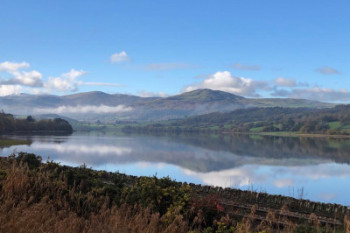
19 days | 18 nights
$ USD 1650
Annapurna Circuit Trek
Experience the allure of one of the world's iconic long-distance trekking trails, renowned for its breathtaking...

